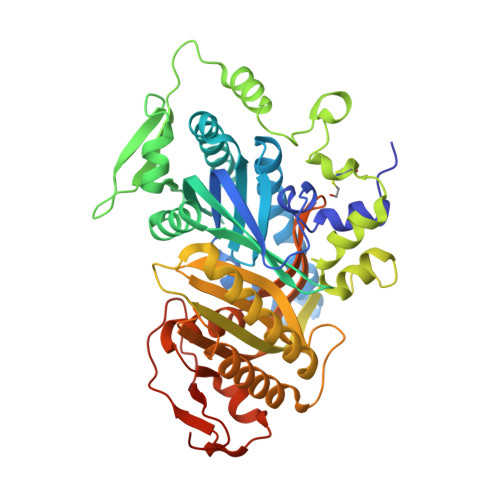Scaffold Hopping and Optimization of Small Molecule Soluble Adenyl Cyclase Inhibitors Led by Free Energy Perturbation.
Sun, S., Fushimi, M., Rossetti, T., Kaur, N., Ferreira, J., Miller, M., Quast, J., van den Heuvel, J., Steegborn, C., Levin, L.R., Buck, J., Myers, R.W., Kargman, S., Liverton, N., Meinke, P.T., Huggins, D.J.(2023) J Chem Inf Model 63: 2828-2841
- PubMed: 37060320
- DOI: https://doi.org/10.1021/acs.jcim.2c01577
- Primary Citation of Related Structures:
8CNH, 8CO7, 8COJ, 8COT - PubMed Abstract:
Free energy perturbation is a computational technique that can be used to predict how small changes to an inhibitor structure will affect the binding free energy to its target. In this paper, we describe the utility of free energy perturbation with FEP+ in the hit-to-lead stage of a drug discovery project targeting soluble adenyl cyclase. The project was structurally enabled by X-ray crystallography throughout. We employed free energy perturbation to first scaffold hop to a preferable chemotype and then optimize the binding affinity to sub-nanomolar levels while retaining druglike properties. The results illustrate that effective use of free energy perturbation can enable a drug discovery campaign to progress rapidly from hit to lead, facilitating proof-of-concept studies that enable target validation.
- Tri-Institutional Therapeutics Discovery Institute, New York, New York 10021, United States.
Organizational Affiliation:





















